Cut off from the rest of the country and in “dire need of development” is the farming community of Laluni Creek. Located on the Soesdyke Highway access to the community is via a nine-mile road from Kuru Kururu. Laluni has been a farming community from the beginning. It was once a tobacco farming settlement when the Demerara Tobacco Company (Demtoco) controlled it between 1964 and 1994.
One of the very first settlers in the community was Edward Patterson. The 68-year-old who is originally from Santa Mission explained that Demtoco started with 11 farmers and workers, a number which then grew to 50 persons farming tobacco.
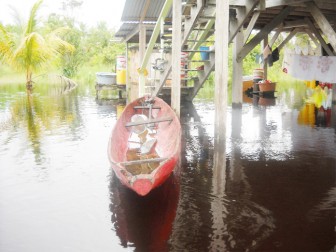
“Life presently is rough,” Patterson went on, “[but] because of the amount of time I spent here we have our foundation here, I have to live here.” The farmer of cherries, citrus and other crops said it is difficult for the community which is very dependent on farming.

Patterson noted that the access road to the community is in a terrible state, and that there was a health centre without personnel. He remembered that with Demtoco the community was well provided for but now they are on their own, “you just surviving.”
What makes life even more challenging for the community is that it does not have a governing body that oversees its development, “You want the road fix, you do it yourself; there is nobody you can go to… Laluni is in dire need of development.”
It is only when government officials visit that residents are promised developmental work, but nothing after. As one resident commented, “Laluni is cut off from the rest of the country. People here only looking out for themselves.”
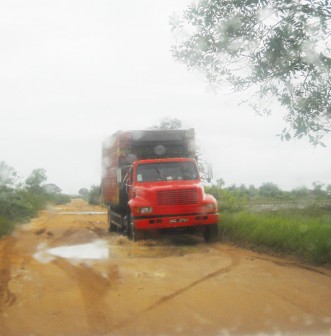
For the Ferreiras who live across the Laluni Creek, “People in Laluni trying man, trying fuh betterment you know.” A native to the community, the family lives across the creek which is accessed by a paddle boat.
The creek is currently overgrown by swamp grass. Recently, heavy rains swelled the creek and with the grass impeding the flow, it flooded several sections of the community, including the Ferreiras.
According to Yvonne Ferreira, the family farms citrus, passion fruit and cherries, among others. Her son, Emanuel Ferreira, pointed out that there are five families living and farming over the creek.
“Me like Laluni; it quiet, me like farming being self employed,” another Ferreira stated. “Laluni to me is nice but they can get a better road and clean out the creek. It can make life way better for we,” the son remarked.
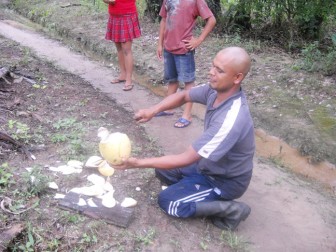
The community of Laluni does not have electricity. Most persons use generators for light. There are about four wells, but one which was dug by Patterson is what is used mostly. For leisure, persons usually play cricket or volleyball, or the school will host concerts to entertain the residents.
Although residents are quick to point out that the current Amerindian Minister hails from the community, some felt that she has abandoned them. They were of the opinion that more can be done for the community which comprises Amerindians as well as African and Indian-Guyanese.
“What can help the community is if the community is more organised. You don’t have a council or a village head,” one resident noted.
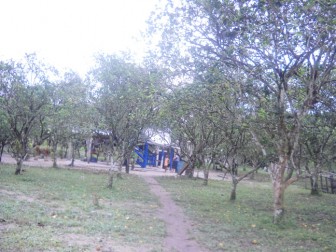
Efforts were once made to have the community be named a ‘mission,’ but because of the mixture of races this was not successful this newspaper was told.
While many residents claimed that they are not aware of any official who represent their community at the government level, this newspaper found a Regional Democratic Councillor (RDC) from the Region Four administration. Asking that her name not be published, the woman who is native to the community said that she meets every month with regional officials and makes representations on behalf of the community.
She said that many of the residents are aware of her role in the community, but “they don’t have respect.”
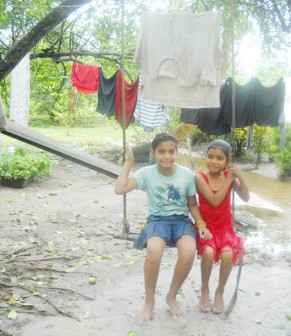
The RDC pointed out that Laluni is a developing community whose biggest challenge is the road.
The woman noted that the road was supposed to be fixed but works were delayed because of the weather.
Education challenge
Anthon Abrams has been the head teacher of the Laluni Nursery, Primary and Secondary school since 2001. “The people are very hospitable,” Abrams said but, “There are a lot of challenges at the school.”
“This is not an ideal situation,” he observed. Abrams is responsible for 140 students at the nursery, primary and primary top level of the school. There is only one building, which houses all these grades, and currently all are crammed into the bottom flat of the building because of limited furniture.
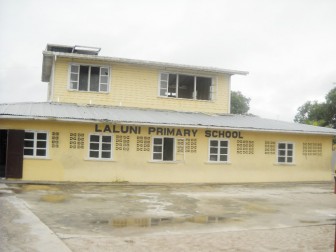
Abrams noted that the school is also short of staff. Requests have been made to the relevant body for assistance, but because of the distance monitoring is not very frequent.
Of concern to the headmaster is the fact that most children in the community only complete primary level and do not attend secondary school. “The children write the national Grade Six exams and do well, but because of the distance they stop at grade nine at the primary top here.
It is a sacrifice for many parents who do decide to let their children go to secondary school in the community. But Joan Bhagwandin says she makes an effort at ensuring her daughter gets a secondary education because she would like her to give back to the community.
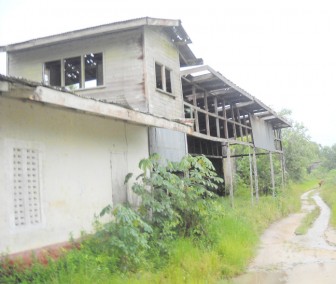
“In hey is sheer farming work, and if she nah tek education is that she have to do; she nah like farming and me tell she she gah tek she education,” said Joan.
Sabita Bhagwandin is your typical 13-year-old. A student of the Diamond Secondary School, she has to spend weekdays with relatives in Kuru Kururu in order to be able to attend school. On weekends she goes back to her family in Laluni.
Currently staying at home with her mother because of the Mashramani activities at her school, the somewhat shy but smiling Sabita says she is in Form One. “What we want is when she done school she can get a job and come back and help the community,” her mother, Joan, interjected.
According to the Bhagwandins the community is in need of teachers and health officials. But providing an education for her daughter she said is a challenge.
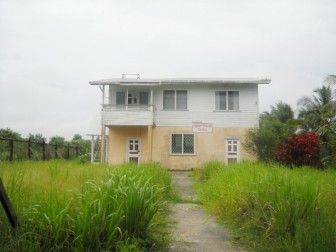
“Only some people can afford it. It does hard; you does have to get transportation money to come out Laluni, relatives fuh them stay by and then more transportation money fuh them go to school,” she noted.
Currently there are approximately 1,200 persons living in Laluni. The community was described as “quiet,” “breezy” and cool.





